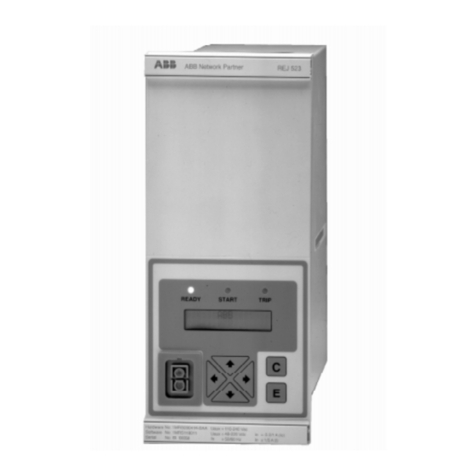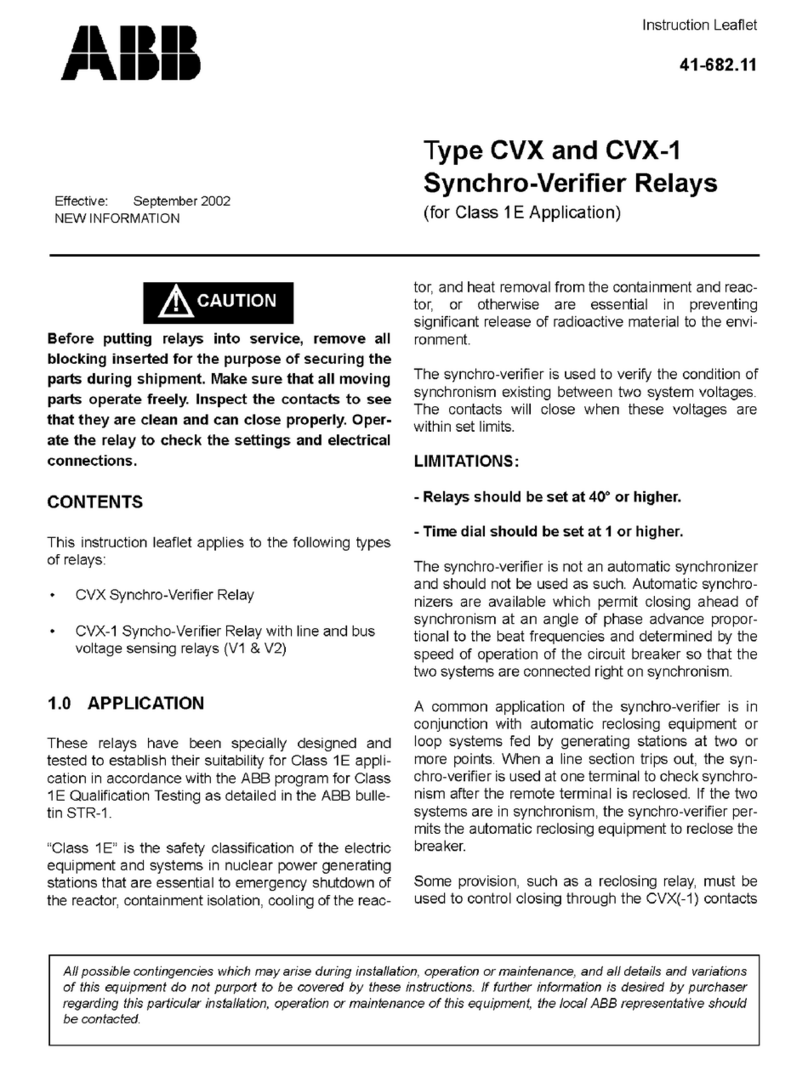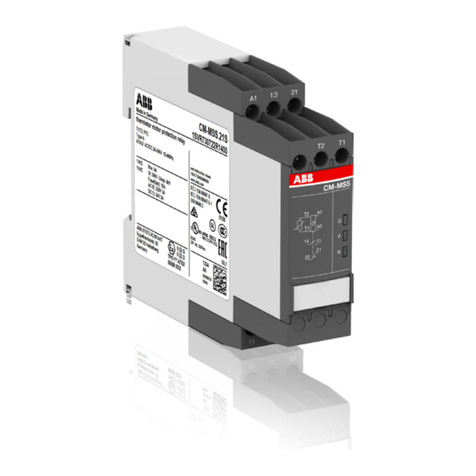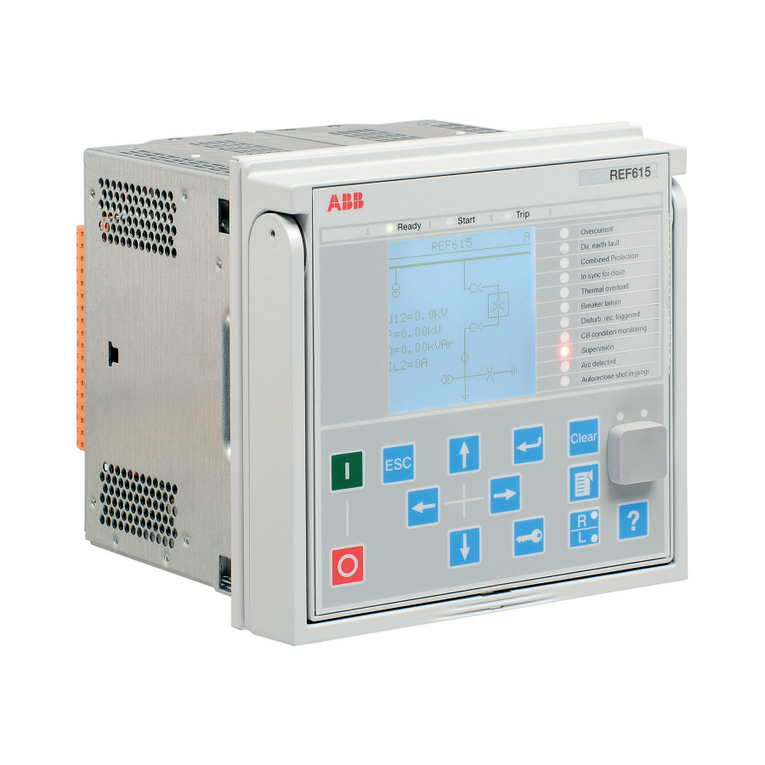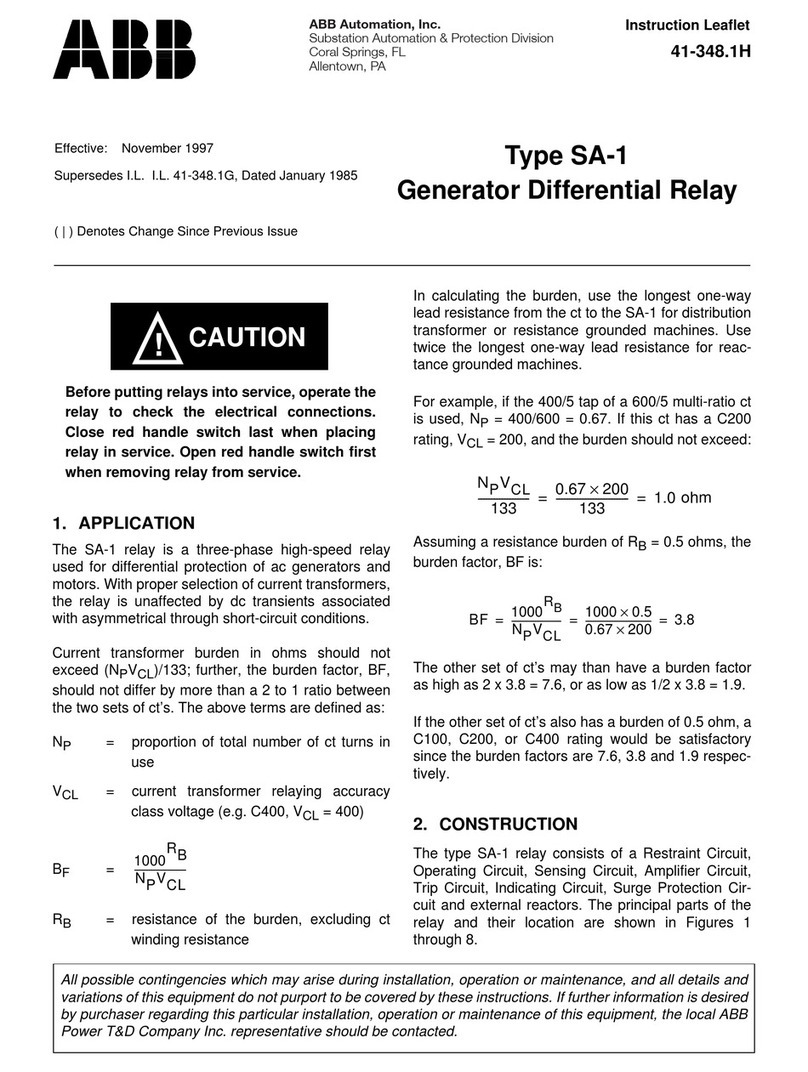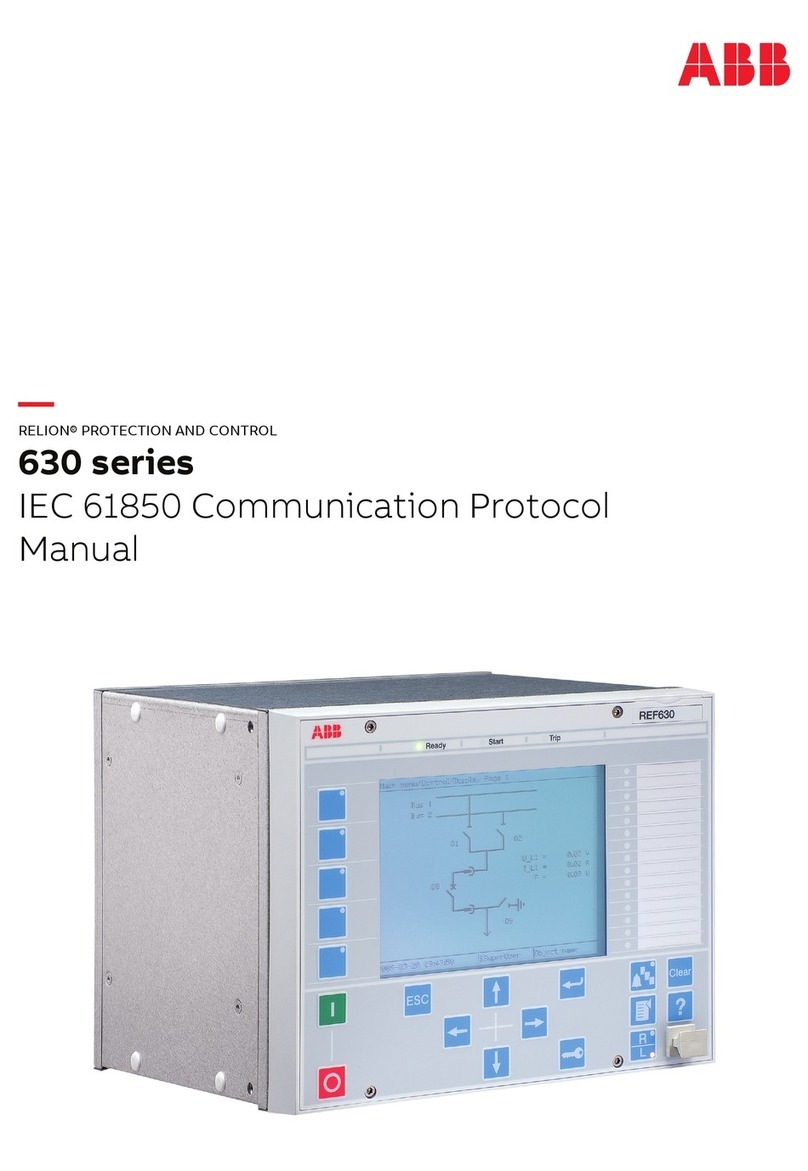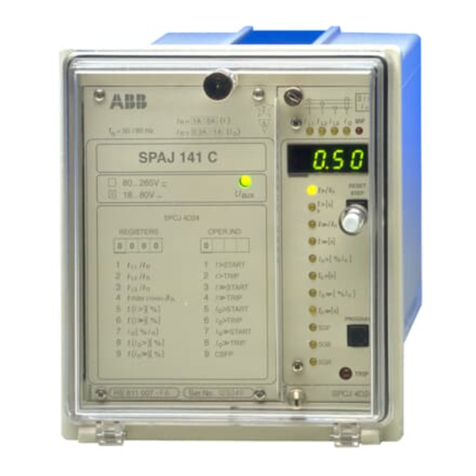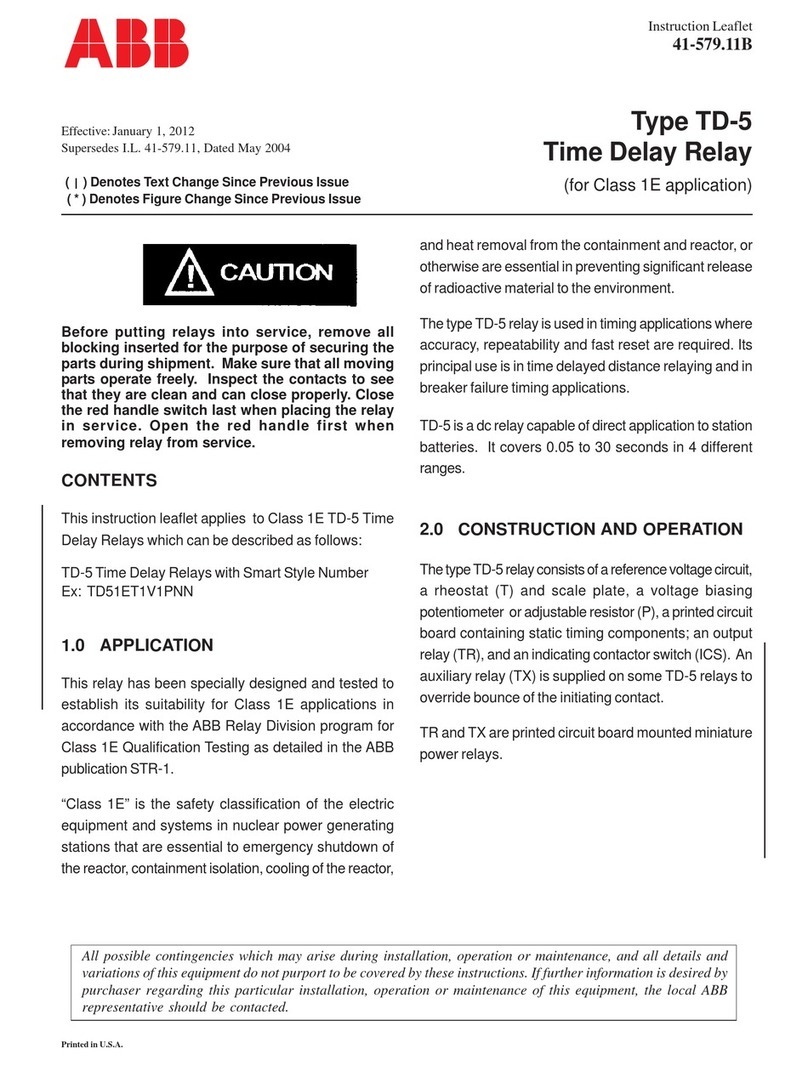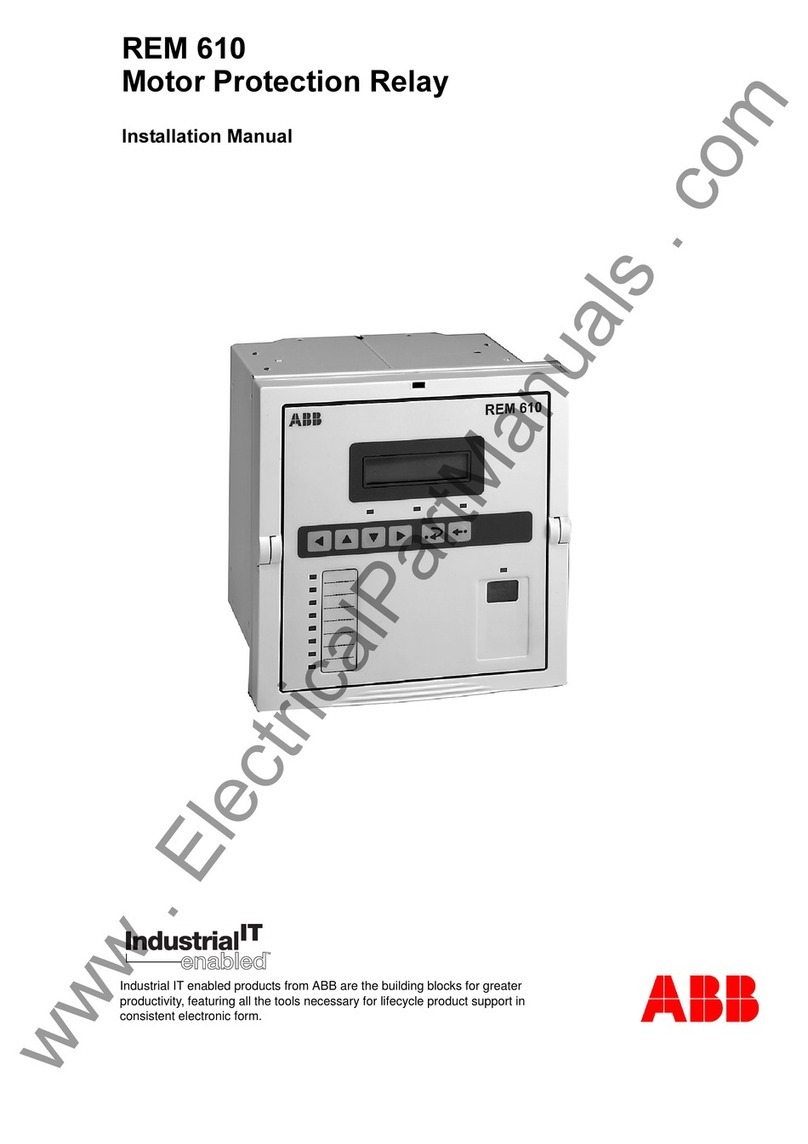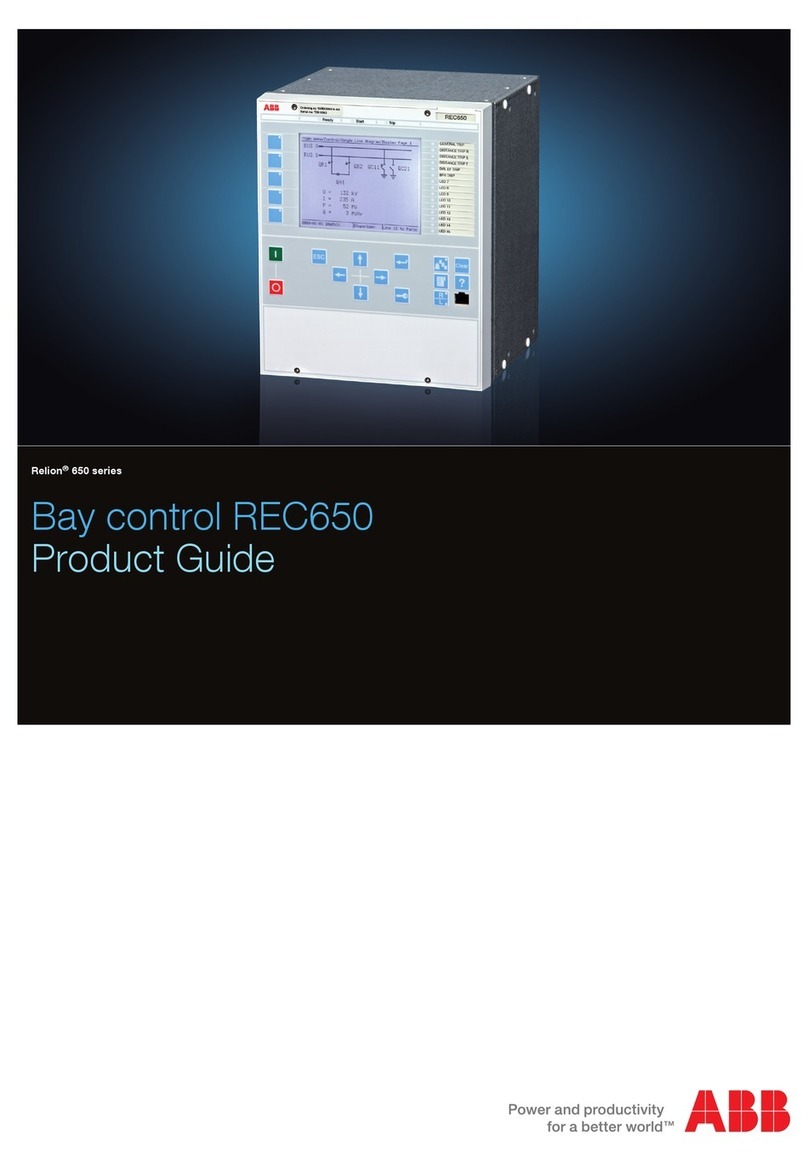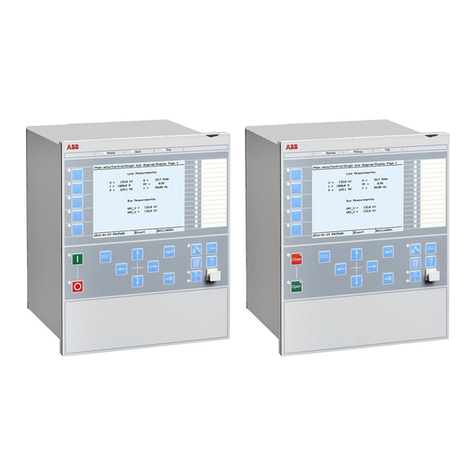
6
Operation
indicators
SPCF 1D15
TRIP
RESET
STEP
0024C
PROGRAM
IRF
f
U
f
<
>
<
>
d
f
d
t
SGR
SGB
SGF
[ ]
n
f
U
/
<
Hz
n
U
[ ]
f
Hz
∆
[ ]
r
t
s
>
[ ]
d
f
d
t
/ /
Hz s
[ ]
1
f
Hz
[ ]
4
f
Hz
[ ]
3
f
Hz
[ ]
2
f
Hz
[ ]
1
t
s
,1
t
,
[ ]
2
t
s
,2
t
,
[ ]
3
t
s
,3
t
,
[ ]
4
t
s
,4
t
,
U
RS 452 001 - Ser.No.
SPAF 140 C
aux
REGISTERS OPER.IND.
1
2
3
4
5
6
Stage 1 Start
Stage 1 Trip
0476A
80...265V ~
–
18...80V –
Stage no.
Start ctr
U
n
U
/
f[Hz] [Hz/s]
Stage 2 Trip
Stage 3 Start
Stage 3 Trip
Stage 2 Start
SPCF 1D15
2
5
1
2
3
4
5
6
Stage 4 Start
Stage 4 Trip
Rec. Due
Rec. Over
A
7
8
9
max
min
f
max
min
df/dt
df/dt
n
U
=100V/110V/115V/120V
0000 0
modules and on the system panel of the fre-
quency relay.
Start indications can be programmed to re-
main lit, even though the stage resets. In gen-
eral, the numbers indicating start are auto-
matically reset, whereas trip codes have to be
manually reset by pressing the RESET push-
button. The TRIP indicator at the bottom
part of the front panel can be set to indicate
tripping of any stage. The BS_ signals can be
configured to automatically reset the trip
indicators. A non-reset operation indicator
does not affect the operation of the relay
module.
3. A measured or set value presented on the dis-
play is identified by yellow LEDs on the front
panel.
4. A permanent fault detected by the self-
supervision system is indicated by the IRF
indicator of the concerned relay module
and a fault code on the display of the relay
module. The fault code should be recorded
to facilitate maintenance and repair.
The operation indicators are described in more
detail in the descriptions of the relay modules.
Fig. 3. Front panel of frequency relay SPAF 140 C
1. The green LED indicator Uaux on the sys-
tem panel is lit when the power supply is
operating.
2. Measured values, settings and start and trip
data are indicated on the display. Starting and
tripping are indicated by a red operation code
to the left of the display. The operation codes
are explained in the descriptions of the relay
Combined power
supply and I/O
module
The power supply and I/O module of the fre-
quency relay SPAF 140 C is located behind the
system panel of the relay. The module can be
withdrawn after removal of the system panel.
The power supply and I/O module includes the
power supply unit, the output relays with con-
trol circuits and the electronic circuits of the
external control inputs.
The power supply module is a transformer-con-
nected, i.e. galvanically isolated primary and
secondary circuits, flyback type DC converter.
The primary side is protected with a fuse, F1,
situated on the PC board of the module. The
fuse size is 1 A (slow).
The green LED indicator Uaux on the front
panel is lit when the power supply unit is in
operation. The supervision of the voltages sup-
plying the electronic circuits is integrated into
the relay module. A self-supervision alarm is
received once a secondary voltage deviates from
its rated value by more than 25%. An alarm sig-
nal is also received, if the power supply module
is removed or the auxiliary voltage supply to the
relay is interrupted.
The power supply and I/O module is available
in two versions with the following input voltages:
- SPTU 240 R4 Uaux = 80...265 V ac/dc
- SPTU 48 R4 Uaux = 18...80 V dc
The voltage range of the power supply module
of the relay is marked on the system panel of
the relay.
The output signals SS1 and TS1...TS2 of the
mother PC board control an output relay with
the same designation. The operation of a stage
is not fixed to a specific output relay, but can be
configured for the desired relay. However, it
should be noted that the output relays TS1 and
TS2 can be used for circuit breaker control. The
configuration of the switchgroups is described
in the module-specific manuals.
The switchgroups of the relay modules are used
for configuring the external control inputs,
which can be used for blocking one or several
protection stages, resetting operation indicators
or selecting second settings, etc.
